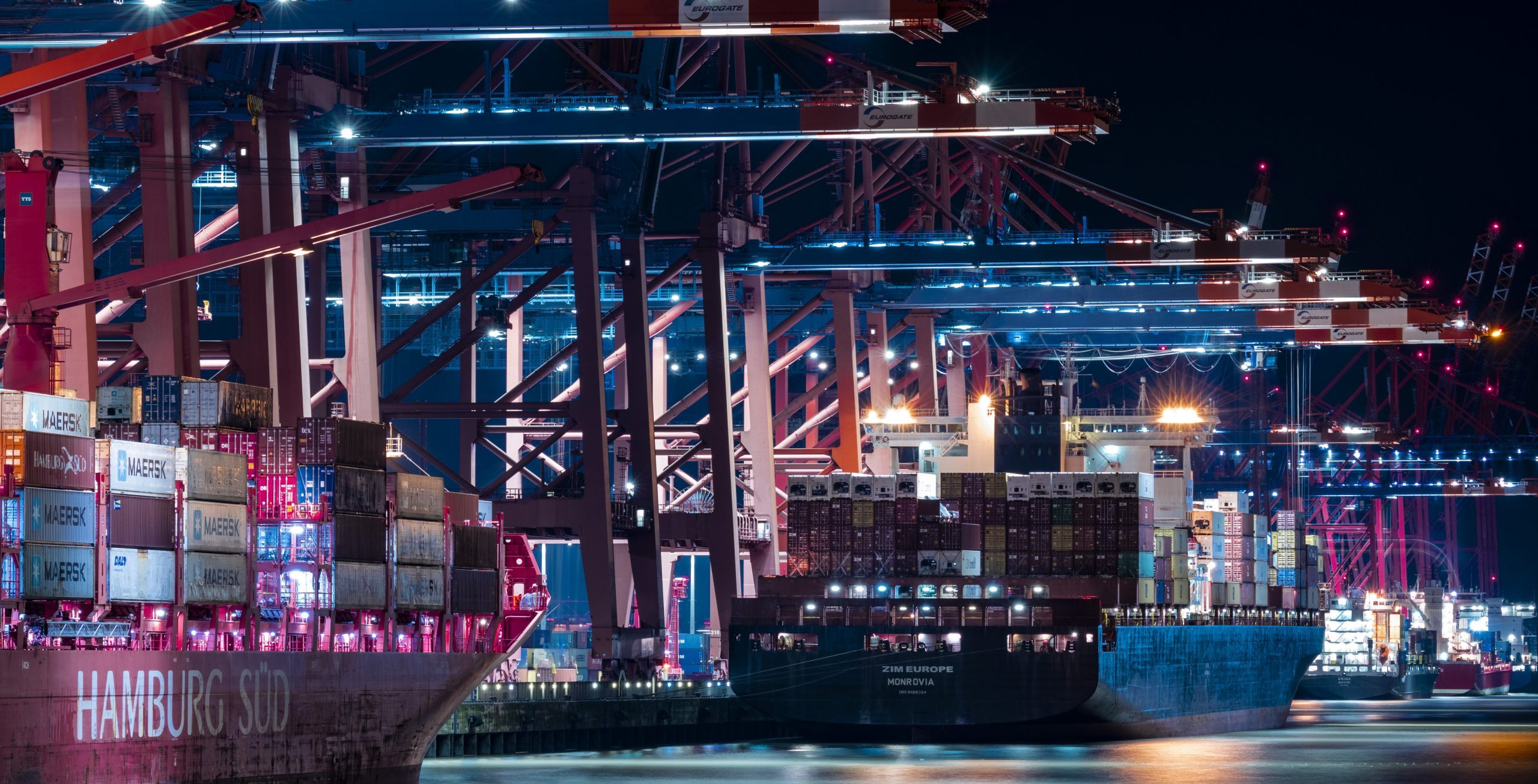In Egypt, which imports everything from commodities, such as wheat, to luxury items and manufacturing supplies, shipping costs and delays significantly impact business health. Since the beginning of the pandemic, freight prices have been rising at unprecedented rates. Robert Khachatyan, COO of Freight Global Logistics, said that in 2020, 90% of his cargo moved at premium rates that were nearly 10 times what they were in 2019, according to Freightos, a specialized portal.
Those sudden astronomical jumps affected the prices of even the most trivial goods. Christopher Tse, CEO of Musical Electronics, a Hong Kong toymaker, has seen the cost of magnets used in his puzzles rise 50% this year, as reported by South China Morning Post in August. That increased production costs by 7%. Prices are rising so fast that Tse can’t calculate his expenses: “I don’t know if we can make money from Rubik’s Cubes because prices keep changing.”
Price cycles are not a new phenomenon in the sector. “They are an inherited part of the shipping industry,” noted a 2017 report by Maritime Economics & Logistics, an industry publication. Accordingly, correctly predicting fluctuations and when they might happen “could save lots of money just by being able to make appropriate decisions at the right time,” said the report.
That hasn’t been possible since the pandemic started, as shipping prices have defied all forecasts. “I have been in this business for 20 years and $4,500 was the previous high I had seen for a container,” Khachatryan told Hellenic Shipping News in July. “I think that [figure] will be the new floor.”
Reducing shipping costs to their historical averages is essential for businesses and the global economy. However, it is a tricky balancing act that raises questions of whether maritime freight will continue to be the preferred mode of cargo transport.
The business
Maritime freights are the main artery fueling the global economy. In 2017, Maritime Economics and Logistics, a specialized publication, estimated shipping accounted for 80% of international trade. In 2020, ships transported nearly 90% of goods worldwide, according to a Reuters article in July.
In July, David Hammond, CEO of Human Rights at Sea, a specialized advocacy group, told Reuters the global maritime supply chain is a $14 trillion industry. That is just shy of China’s $14.34 trillion GDP in 2020 and more than the economies of Japan, Germany, Italy and India, combined.
Despite its massive scale, shipping uses a simple supply and demand dynamic to set prices. It involves negotiating the freight rate based on available cargo and free shipping capacity at the port, according to the 2017 Maritime Economics and Logistics report. “If the total available shipping capacity is more than the cargo to be shipped, the freight rate will be low, and vice versa.”
The complex part of that negotiation is that it must take other factors into account. That includes the route, delivery window and risk of delays.
That last point is particularly critical. A case in point was when the Ever Given blocked the Suez Canal for six days in March, immobilizing 450 ships at both ends of the canal. It cost between $6 billion and $10 billion and dropped annual trade growth forecasts by 0.2 to 0.4 percentage point, according to Allianz.
Another dynamic impacting the shipping business is the use of huge container vessels to carry more cargo one trip. They are slower than smaller ships, reducing available capacity at ports. That means lower fuel and bunkering costs, which is “the most important driver when it comes [to] operational cost in liner shipping,” noted the 2017 Maritime Economics & Logistics report.
Choosing the routes and pit stops to avoid crowded ports is another vital dynamic. “Rerouting vessels from Europe to Asia via the ‘Cape of Good Hope’ has been another supply-side flexibility tactic since 2008,” noted Ziaul Haque Munim, associate professor of maritime logistics at the University of South-Eastern Norway. “This is not only to avoid Suez Canal tolls. The resulting longer voyage helps to absorb excessive shipping capacities, too.”
Booming business
Lockdowns worldwide to curb the spread of Covid-19 boosted demand for specific types of goods, including electronics and furniture. “Consumers who were able to work from home found themselves with extra money since they were limited in how they could spend it,” wrote Judah Levine, research lead at Freightos, in August.
Another factor that is increasing demand for products in 2021 is that companies are restocking their inventories. They depleted those reserves in 2020 as overseas suppliers decreased production due to lockdowns. “Many businesses are running on limited inventory,” said Lavine. “Efforts to restock barren warehouses are likely to keep demand elevated.”
Meanwhile, many businesses are ordering supplies earlier than usual to guard against future lockdowns, Khachatryan of Freight Right Global Logistics wrote in a blog published in July. “Christmas-related items [are] already being shipped [compared to August or September] … Next year, we expect to see customers start ordering even earlier.”
Lavine said strong demand has caused a persistent, sharp rise in trade volumes since mid-2020. “Unlike in normal years, 2021 will not really have a peak season [between July and October] in the traditional sense, since the line market is already sold out and carriers are largely unable to procure additional tonnage,” noted DHL freight’s September update.
“All of the world’s container ships are active right now,” said Lavine in the Freightos August report. “In the current situation, there is no extra capacity, which is putting pressure all along the supply chain.” DHL’s report estimates “liner markets [will] continue to run at near 100% utilization levels throughout much of the year.”
As a result, all those containers are overwhelming the capacity of the ports to process them, noted Lavine. That causes unprecedented waits at major ports around the world.
Cost timeline
Lavine said shipping prices started to rise in the last quarter of 2020, when containers were in short supply. Then there was a significant jump when the Ever Given got stuck in the Suez Canal in March.
In June, a Covid-19 outbreak and subsequent partial lockdown of the port of Yantian, China’s largest container terminal, spiked shipping prices further. According to a DW report, about 5% of global freight capacity was stuck at the port at the time.
Further fueling the rise in shipping prices are ports at Yangtze estuary and Hangzhou Bay in China; Ho Chi Minh City in Vietnam; and Los Angeles, Long Beach and Oakland in California, according to the DHL outlook document.
As a result, some ocean carriers increased prices by 1,000% compared to 2020, reported Asteelflash, a supply-chain management company, in its Air and Sea Freight Market Update – Q2 in June. It added that rising demand and limited supply from manufacturers are primary reasons for the increasing rates. Additionally, shipping companies want to maintain operating margins to compensate for unforeseen delays at the ports.
Building capacity
Shipping prices will likely continue to rise beyond 2021 as “forecast demand [would continue] to outstrip supply through 2022,” noted Moody’s in a June paper. Its “conservative” estimate is shipping volume will rise 5% to 7% while capacity would increase 4%. Meanwhile, Clarkson Research Services predicts a 5.7% growth in demand for cargo, while capacity increases by 4% this year. IHS Markit estimated container volumes would grow 7.5% this year, while capacity would rise only 3.2%.
DHL’s September transportation sector outlook noted that “a number of carriers stated they would have to deploy 20% more tonnage to carry a similar amount of cargo as in ‘normal’ times.”
Freight companies shouldn’t find the need to increase their capacities financially challenging. “Operating profits for the 11 report carriers, measured in earnings before interest and taxes, reached $16.2 billion in the first quarter,” Moody’s said. “That is greater than the sum of the previous 10 first quarters combined.”
Drewry estimates the sector will make $35 billion in operating profit by the end of 2021. However, Moody’s said that is a conservative estimate that would likely rise to “reflect continued high levels of demand and a steady increase in both spot and contract rates.”
Accordingly, with freight companies expecting higher profits amid reliable forecasts that demand would continue to rise, several announced expansions that would take effect in 2023. “The container ship order book is booming,” said Italian maritime brokerage Banchero Costa in an August paper.
The brokerage estimates that maritime transport companies ordered at least 275 new vessels in the first half of 2021, adding 10% to the global freight capacity in 2020. However, Banchero Costa pointed out it takes at least two years to build those new ships, which means that fleet capacity growth would not surpass 3% through next year.
Among those carriers is French CMA CGM, which announced its net profits during the second quarter of 2021 were 25-times more than the same period last year. “The strong rebound of the global economy has resulted in unprecedented demand for transportation and logistics services,” said Rodolphe Saade, CMA CGM CEO. He said the company would receive 14 new container ships in 2021, and 22 in 2023 and 2024, and is also looking to buy 32 second-hand freighters.
Banchero Costa’s paper forecast that the number of ships scrapped in 2021 would be one of the lowest since 2011, as shipping companies buy used vessels to increase fleet capacity immediately. However, when the new freighters come into service by 2023, the number of discarded ships will be the highest in recent years, noted the brokerage.
More fragile than ever
Alan Murphy, head of Danish consultancy Sea-Intelligence, worries freight companies might have a tiny window to benefit from this added capacity. In September, he told SCMP the market was already depressed before the pandemic “due to overcapacity.” Accordingly, if the global economy can operate reliably the next few years, those new ships would remain idle most of the time. “We believe these conditions are short-term and will self-correct as trade normalizes from mid-2022,” noted Gray to Hellenic Shipping News.
Nevertheless, having excess freight capacity might prove prudent. Cindy Wang, a reporter for Fortune, stressed in an August article that “China’s determination to stamp out Covid has meant that even a small number of cases can cause major disruptions to trade.” Meanwhile, in July an anonymous shipping broker told Independent Commodity Intelligence Services it would only take a hurricane to cause worse maritime freight shortages than what the world is experiencing now.
Ruthie Amaru, Freightos CEO, noted that rising maritime transport costs and long transit times might make it financially unfeasible and risky if the ports go into lockdown while cargo is in transit. “It is more important than ever to look for different options for sourcing goods and to be flexible with the modes of transportation,” she told Hellenic Shipping News in July. “For example, it would have been cost-effective prior to the pandemic to ship goods via air freight. Now that the rates have spiked, the gap has narrowed.”







